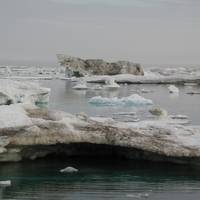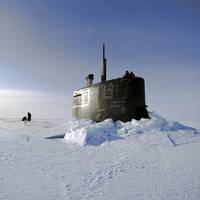House Subcommittee Hearing Highlights “Dismal State” of U.S. Icebreaking Capability

At the July 23, 2014, hearing of the House Subcommittee on Coast Guard and Maritime Transportation on “Implementing U.S. Policy in the Arctic” the committee chairman, Rep. Duncan Hunter (R-CA), opened the proceedings by holding up a graphic of the icebreaker fleets of the world—which depicts nearly 40 Russian icebreakers—and then commented on the “dismal state” of the U.S. icebreaker situation. The hearing background paper noted that the United States presently has only two working polar class icebreakers…
US Hearing to Review Arctic Policy

The Subcommittee on Coast Guard and Maritime Transportation, chaired by Rep. Duncan Hunter (R-CA), will hold a hearing next week to review U.S. policy in the Arctic and how the agencies with the largest presence in the Arctic intend to implement such policy. It is declared U.S. policy, relative to the Arctic region, to meet national security and homeland security needs, protect the environment, ensure sustainable natural resource management and development, strengthen institutions for cooperation among Arctic nations…
U.S. Navy's AGOR 27: R/V Neil Armstrong

On March 29, the Ocean Class Auxiliary General Oceanographic Research (AGOR) vessel hull number 27 started its official life as the R/V Neil Armstrong, the first research vessel named after a space explorer. Carol Armstrong, the widow of the famed astronaut, performed the christening duties during a brief sunbreak on a windy and rainy Pacific Northwest afternoon. The number of illustrious speakers highlighted the rich diversity of agencies involved in the design, construction and operation of the vessel.
U.S. Navy eyes greater presence in Arctic from 2025
The U.S. Navy is mapping out how to expand its presence in the Arctic beginning around 2020, given signs that the region's once permanent ice cover is melting faster than expected, which is likely to trigger more traffic, fishing and resource mining. "The Arctic is all about operating forward and being ready. We don't think we're going to have to do war-fighting up there, but we have to be ready," said Rear Admiral Jonathan White, the Navy's top oceanographer and navigator, and director of the Navy's climate change task force. "We don't want to have a demand for the Navy to operate up there, and have to say, 'Sorry, we can't go,'" he said.
Navy Updates Plans for a Changing Arctic

"This updated Navy Arctic Roadmap prepares the U.S. Navy to respond effectively to future contingencies, delineates the Navy's Arctic leadership role within the Defense Department, and articulates the Navy's support to achieve national priorities," writes Chief of Naval Operations (CNO) Adm. Jonathan Greenert in the Roadmap introduction. In the coming decades, as multi-year sea ice in the Arctic Ocean recedes, previously unreachable areas may open for maritime use for a few weeks each year.
Navy Christens, Launches New Oceanographic Survey Ship

Accompanied by azure blue skies and a stiff breeze, the Navy christened and launched its newest oceanographic survey ship, USNS Maury (T-AGS 66), the last of its class at VT Halter Marine’s shipyard in Moss Point, Miss., in a traditional Navy ceremony on March 27. The 350-foot ship is named for Cmdr. Matthew F. Maury, considered to be the father of oceanography, nicknamed the “Pathfinder of the Seas” and the first superintendent of the U.S. Naval Observatory. Maury is 24 feet…





